June is LGBTQ Pride Month. Pride celebrations began in 1970 to commemorate the Stonewall Inn riots in New York City’s Greenwich Village a year before, on June 29, 1969, when gays pushed back against another police raid on the Stonewall Inn, which was a known gay bar. Pride celebrations, including parades and carnival-like festivals, became a great “coming out” in which gays and lesbians and their supporters pushed for civil rights, same-sex marriage, and now, apparently, for gender fluidity. Gender-fluid means not being male or female, but rather the ability to change from one gender to the other at will.

In the U.S. — A Conservative Pushback
In the U.S., where same-sex marriage has been legalized by the Supreme Court decision in Obergefell v. Hodges (2015), there has been a cultural and political push back against LGBTQ rights since 2020. In 2023 there are more than 500 anti-LGBTQ bills that have been passed or are pending in state legislatures, mainly in the South and Midwest (except Illinois). Many of the new laws seek to eliminate gender-related health care for youth under the age of 18 and have placed restrictions on drag performances and cross dressing in public venues (see Tennessee). The suppression of drag is intended to keep children and youth from seeing what are considered sexually explicit performances, although drag performances in family-oriented venues in coffee shops and libraries are not sexually explicit. Those who perform in drag for children are more like clowns. But the very idea of men dressed as women is threatening to some folk.

Republicans in particular have revived the old discredited charge that gays (now all LGBTQ people) are grooming children. For what? To seduce them as targets for child abuse? Studies have determined that most perpetrators of child abuse or pedophilia are family members or persons whom children and youth know, and very few of them are homosexuals. Conservatives have applied this proper understanding of grooming to all LGBTQ people and those who support them. In this sense it suggests that LGBTQ folks are trying to recruit more youth to be LGBTQ. But the testimony of gay, lesbian, and trans people is that this is innately who they are. One cannot make someone gay who is not gay. And no therapy can change a gay person into a straight person. See the film Boy Erased (2018), based on the true experience of a young man placed in a gay conversion program by a conservative Christian father.

Attack on Drag
As it happens, the immediate focus of right wing wrath has centered on drag because it is a visible form of gender bending. This places a damper on Pride because drag has often been featured in Pride parades and festivals. Some local Pride parades have been cancelled (see Florida) since the audiences would be restricted to 21 years and older. Businesses that appeal to LGBTQ folks, like Starbucks, have removed Pride displays in 21 states. This is becoming a new form of bullying.

Drag float in Miami Beach Pride Parade 2019
In London hundreds of thousands took to the streets for the 2022 Gay Pride Parade, including the “Queen.”

Some gender-bending individuals stood out. (Angels have no sexuality.)
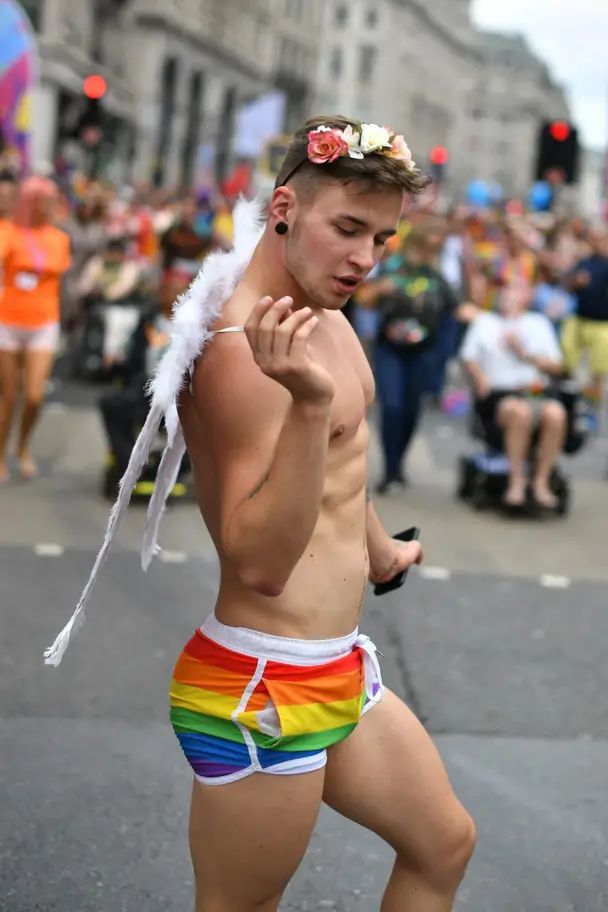
Cross dressing in Theatrical Performance and Films
Queer people have no agenda to recruit people to be like them. As one non-binary commentator, Alok Vaid-Menon, put it: “My agenda is the ability to exist in public without fear of being phsically assaulted.”

Attacks on gender non-conformity has a long history in America. Restrictive cross-dressing bans were included in many municipal criminal codes in the mid-twentieth century. Yet men dressing as women for theatrical production had been routine before the seventeenth century because women were not allowed to perform on stage. All of Shakespeare’s great female roles were performed by men. In a further twist some of Shakespeare’s characters were women disguised as men (originally played by women!). Roles of women in opera were performed by castrati (who were handsomely paid) before the eighteenth century. Today high school plays that include cross dressing are being cancelled.
Male comedians dressed as women in vaudeville skits. This included, in the early days of television, Mr. Television himself, Milton Berle. His show was watched by whole families every Tuesday night in the mid-1950s on their little black-and-white TVs. Here he even got Bob Hope into the drag act.
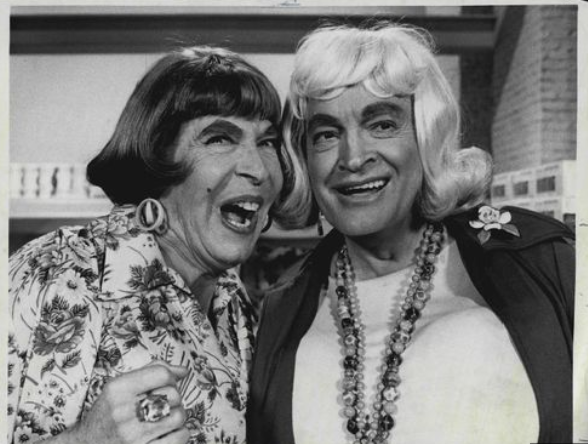
Far from Republicans being opposed to drag and cross dressing, here’s Mayor Rudolf Giuliani taking a role in Victor/Victoria with Julie Andrews cross dressing as a man. As Rudia, a transvestite nightclub singer, the mayor even sang a falsetto version of ”Happy Birthday, Mr. President” — a la Marilyn Monroe — and waved daintily at the crowd of thunderstruck spectators. (By the way, the rumors that former FBI Director, J. Edgar Hoover, was a cross dresser have never been confirmed and are probably baseless.)
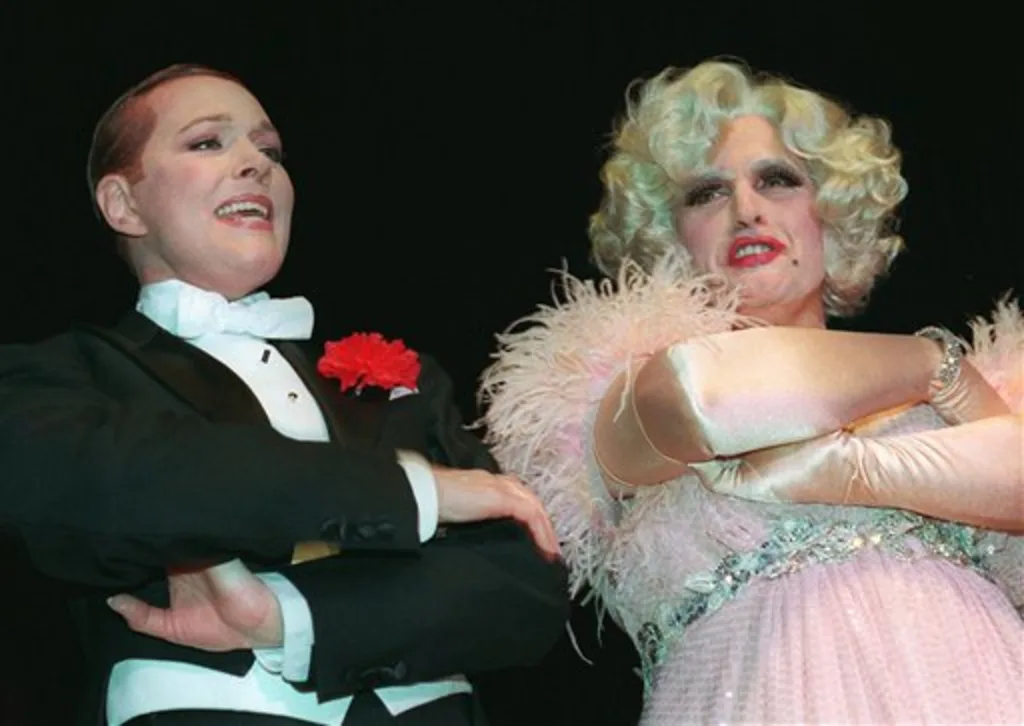
Some popular films featured cross dressing as a central theme. In Some Like It Hot Jack Lemmon and Tony Curtis dressed as women in an all-female band to hide out from a hit-mob. (Can you pick them out? Bass Sax and String Bass)
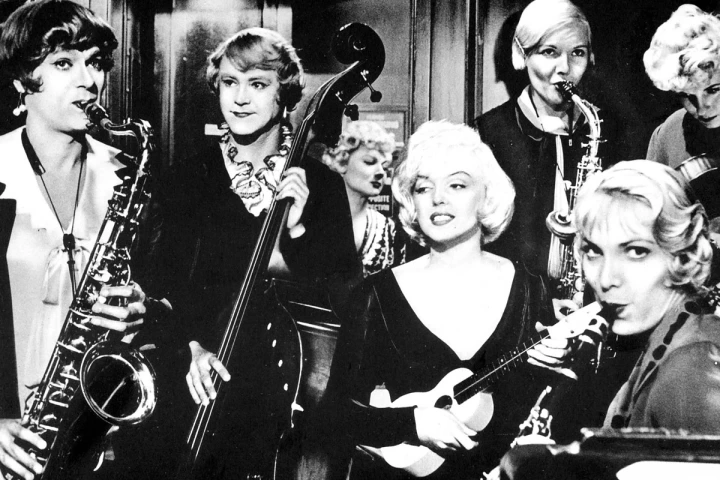
And then there was the family favorite, Mrs. Doubtfire (1993), starring Robin Williams, who disguised himself as a housekeeper to be in contact with his children while working in the home of his ex-wife.

Gender Bending
These popular performances struck against laws in most cities in the 20th century that criminalized appearing in public “in a dress not belonging to his or her sex.” These laws criminalized drag performers, feminists who wore men’s clothing (e.g., pants and suit coat), and men who wore feminine attire. While those laws are gone, modern moralists are trying to tamp down gender fluidity in transgender men and women in particular. “Gender outlaws,” as they called themselves (include self-identified transvestites, street queers, and transsexuals) protested to help defeat these ordinances by the end of the 1880s. Millennials are doing so today in their quieter way,
Here is a trans woman who once was someone’s handsome boyfriend.

This guy likes to wear mini-skirts.
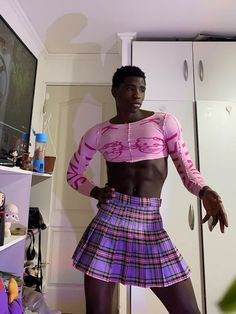
If the fashion world is any predictor, we should expect to see a lot of men in mini-skirts and dresses in the next few years.

The gender fluid guys on Tik Tok with all their followers will surely help to promote cross dressing. Or is that a Chinese plot to undermine American masculinity? (Tongue-in-check) I personally saw a young man in a dress singing in the choir in a seminary event in May. He was otherwise quite masculine, hairy legs and all.

This young man is trying on a wedding skirt and platform shoes. He will probably remain shirtless, as shown. I’ve seen fashion photos of other shirtless young men wearing fluffy skirts and platform shoes.
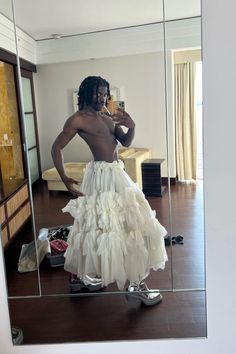
The boys want to wear female attire, but leave their masculine chests exposed. So they are topless in their fluffy skirts.
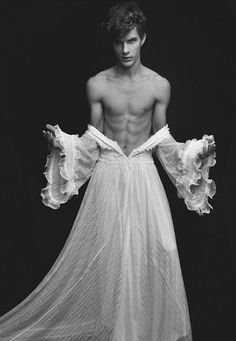
The boys seem to be wearing corsets like this guy to pull in their guts. This perhaps keeps their abdomens flat when they want to wear cropped shirts.

Super cropped tops cover the nipples and expose the bottom of the torso, such as many girls wear.

While boys have worn crop tops that they have cut out of athletic shirts, they also buy them in the women’s departments in order to make a point against sexist dress rules in high schools.

Remember when Timothée Chalamet, the straight actor of the gay-themed film Call Me By My Name, got the pop culture tongues wagging by showing up at the 2022 Oscars shirtless under his suit jacket?

Well, see-through clothing for young men and young women is becoming popular. Maybe some young actor will walk the red carpet in a totally see-through suit (and still no shirt).

Actually, Alessandro Ambrosio attended the 2023 Oscars wearing a see through outfit.

Both young men and young women are wearing mesh shirts. Women as well as men are pressing fashion to show their nipples in public.

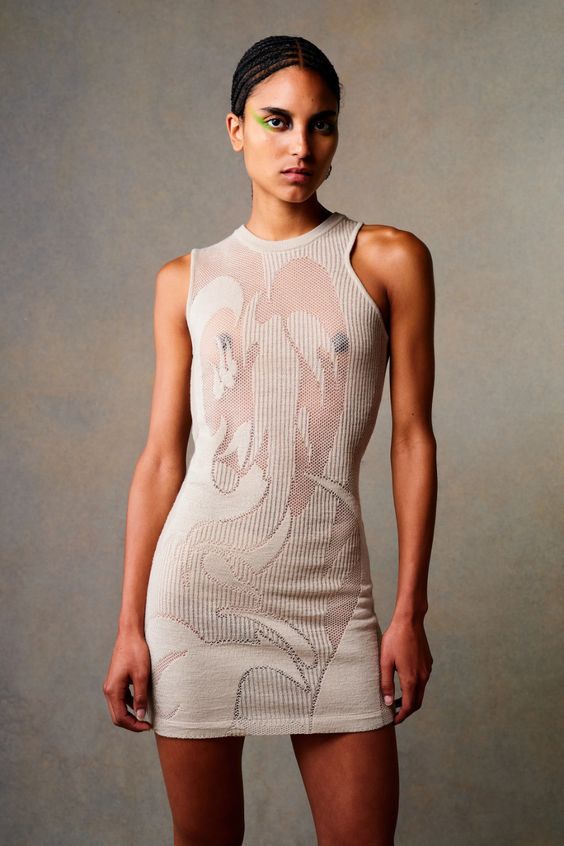
So what’s this all about? The Queer component of LGBTQ is stressing non-bindery reality. They reject norms of masculinity and femininity entirely. Gender fluidity is espoused, and that is outwardly expressed by dress. Whether we are cisgender or transgender, we are harmed as a society when authorities exercise such control over our bodies that freedom of personal expression, including how we dress in public, is suppressed.
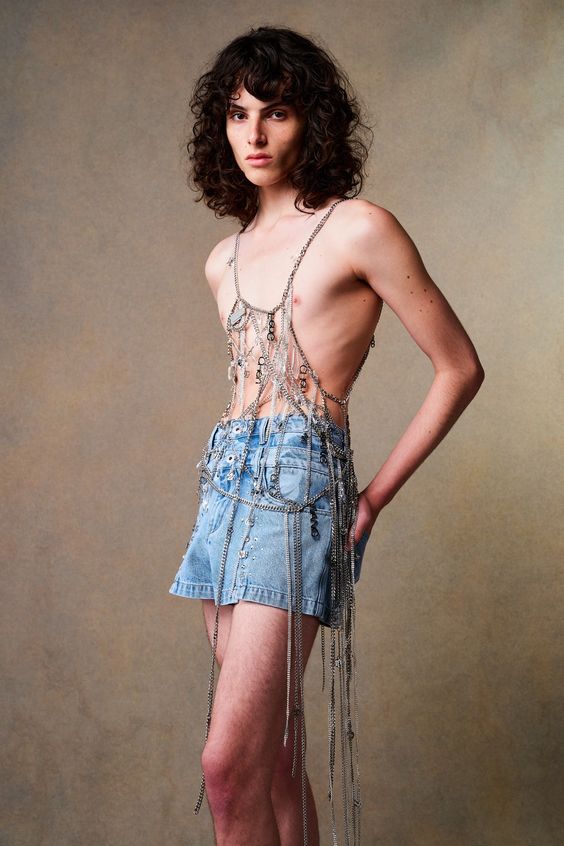
Ultimately, I believe that these restrictive new laws cannot be seen as constitutional, even by a conservative-dominant court. Wasn’t libertarianism once a part of Republican ideology? Remember Barry Goldwater? Isn’t freedom of dress a cause for Pride in the U.S. to take up today? If laws can be passed that so control our bodies as to suppress our freedom of dress—of how we present ourselves in public—, what is the limit of laws suppressing not just LGBTQ rights, but self-expression generally?
Pastor Frank






